Shaoyi Long
AIM 2022 Challenge on Instagram Filter Removal: Methods and Results
Oct 17, 2022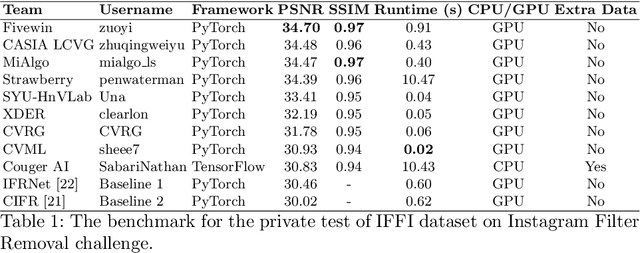
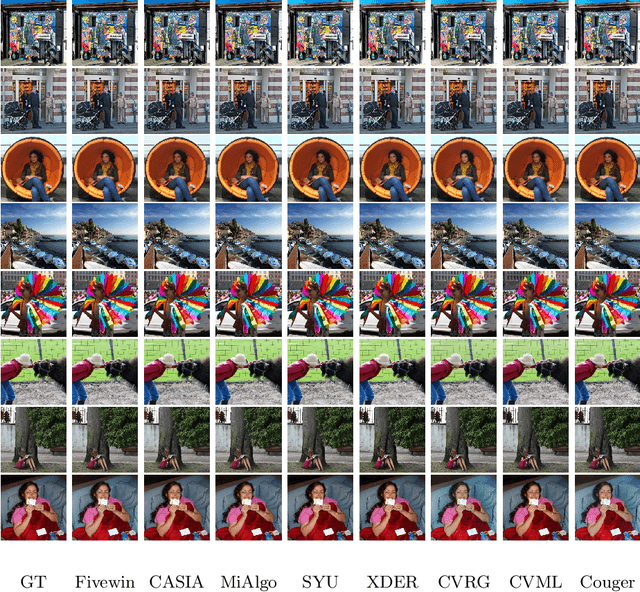
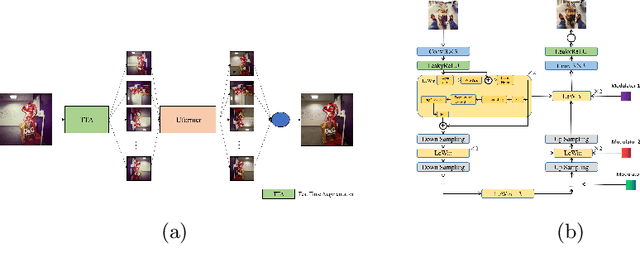
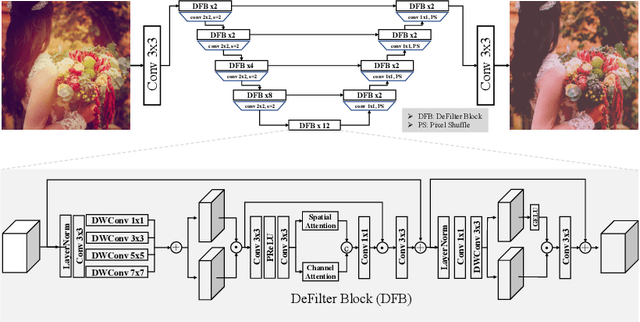
Abstract:This paper introduces the methods and the results of AIM 2022 challenge on Instagram Filter Removal. Social media filters transform the images by consecutive non-linear operations, and the feature maps of the original content may be interpolated into a different domain. This reduces the overall performance of the recent deep learning strategies. The main goal of this challenge is to produce realistic and visually plausible images where the impact of the filters applied is mitigated while preserving the content. The proposed solutions are ranked in terms of the PSNR value with respect to the original images. There are two prior studies on this task as the baseline, and a total of 9 teams have competed in the final phase of the challenge. The comparison of qualitative results of the proposed solutions and the benchmark for the challenge are presented in this report.
Global Priors Guided Modulation Network for Joint Super-Resolution and Inverse Tone-Mapping
Aug 14, 2022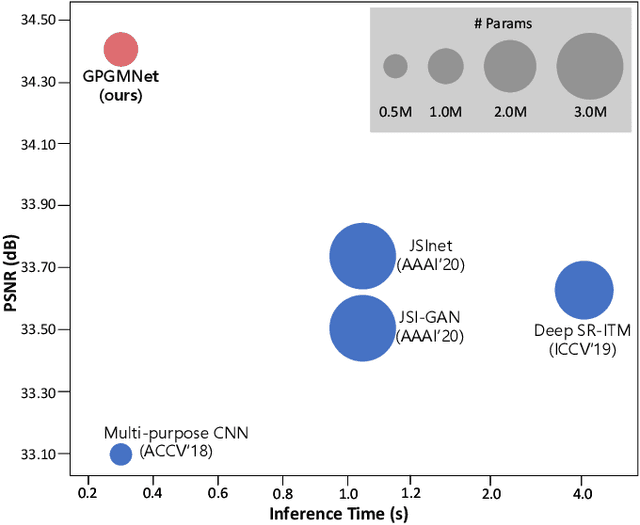
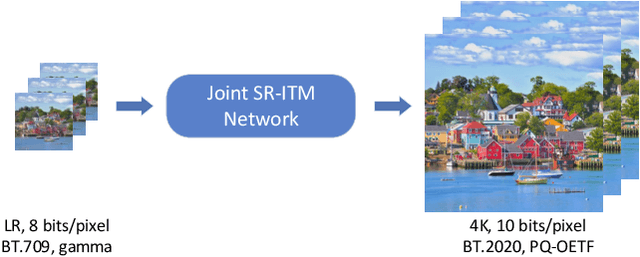
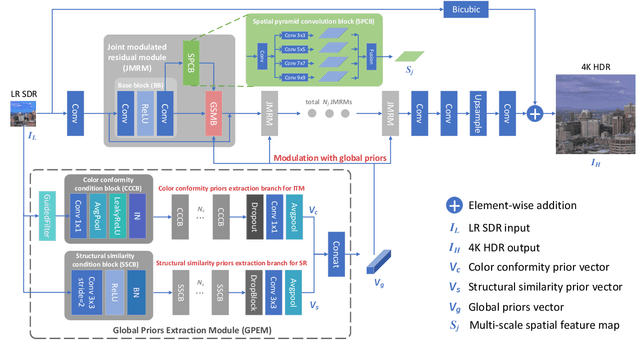
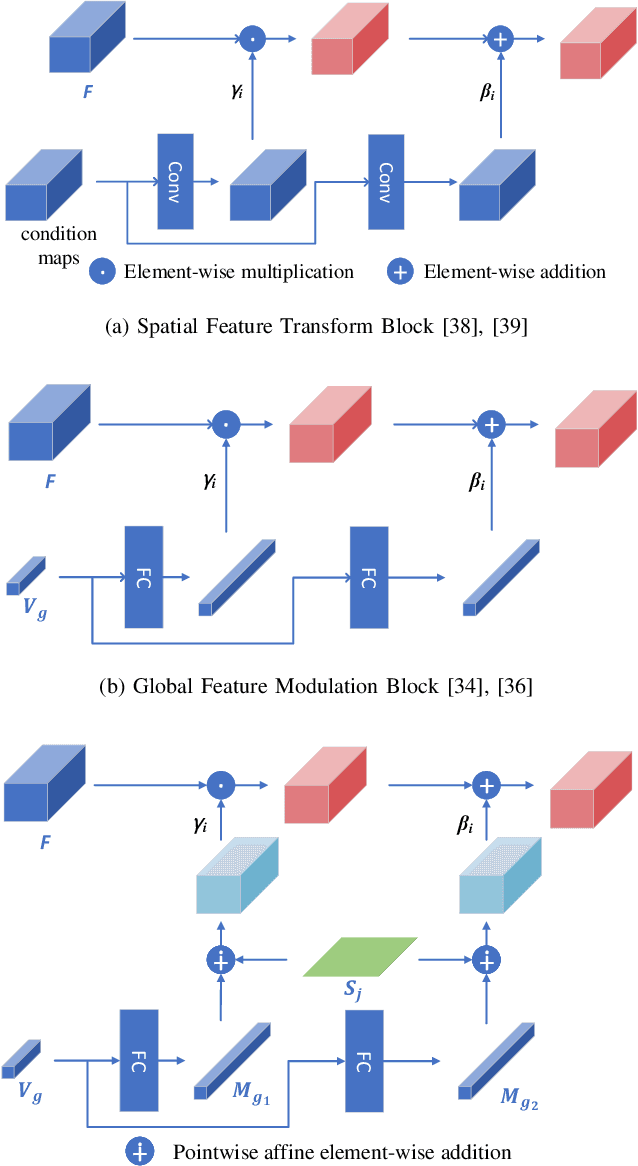
Abstract:Joint super-resolution and inverse tone-mapping (SR-ITM) aims to enhance the visual quality of videos that have quality deficiencies in resolution and dynamic range. This problem arises when using 4K high dynamic range (HDR) TVs to watch a low-resolution standard dynamic range (LR SDR) video. Previous methods that rely on learning local information typically cannot do well in preserving color conformity and long-range structural similarity, resulting in unnatural color transition and texture artifacts. In order to tackle these challenges, we propose a global priors guided modulation network (GPGMNet) for joint SR-ITM. In particular, we design a global priors extraction module (GPEM) to extract color conformity prior and structural similarity prior that are beneficial for ITM and SR tasks, respectively. To further exploit the global priors and preserve spatial information, we devise multiple global priors guided spatial-wise modulation blocks (GSMBs) with a few parameters for intermediate feature modulation, in which the modulation parameters are generated by the shared global priors and the spatial features map from the spatial pyramid convolution block (SPCB). With these elaborate designs, the GPGMNet can achieve higher visual quality with lower computational complexity. Extensive experiments demonstrate that our proposed GPGMNet is superior to the state-of-the-art methods. Specifically, our proposed model exceeds the state-of-the-art by 0.64 dB in PSNR, with 69$\%$ fewer parameters and 3.1$\times$ speedup. The code will be released soon.
 Add to Chrome
Add to Chrome Add to Firefox
Add to Firefox Add to Edge
Add to Edge